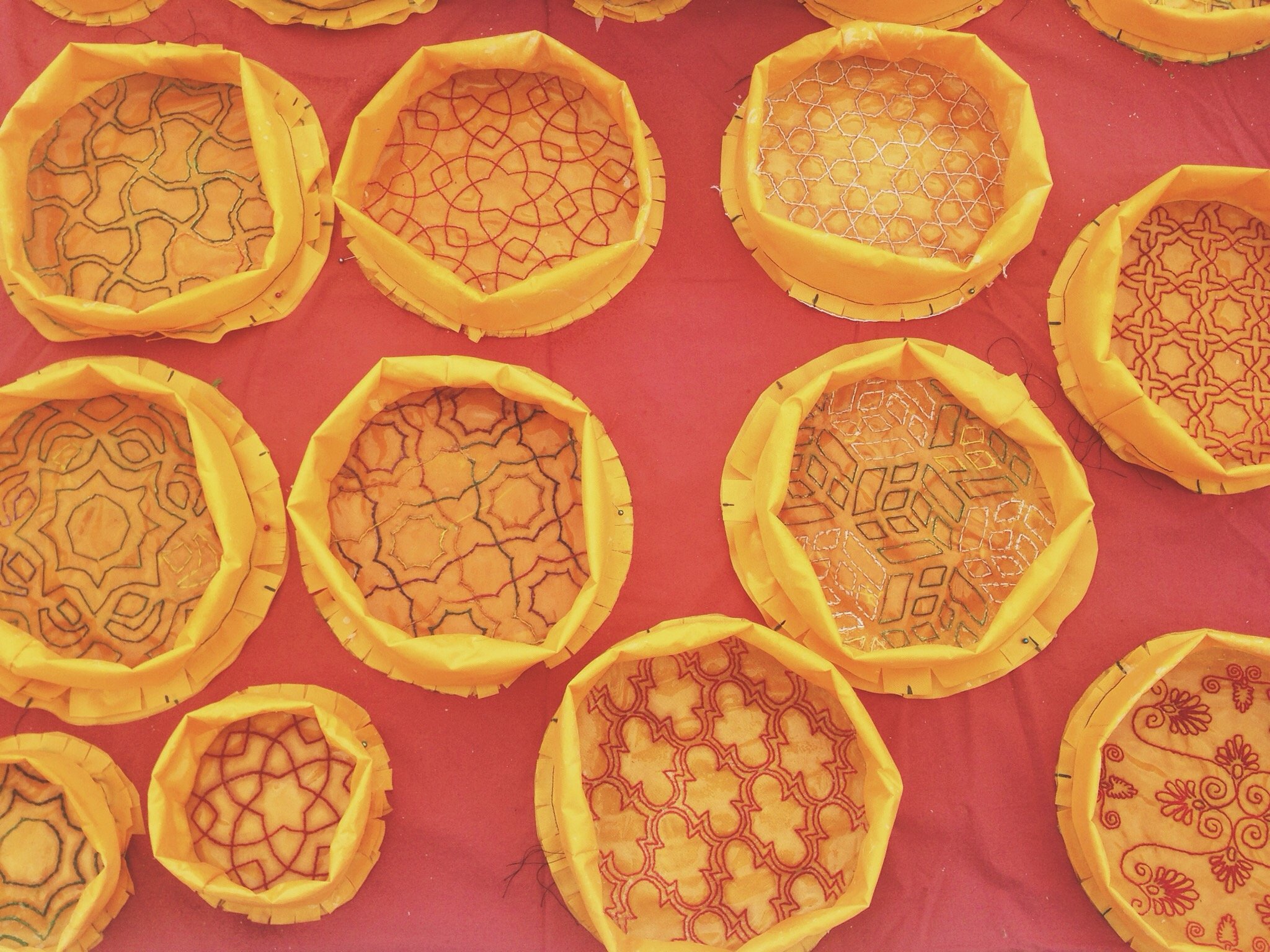
Making MABELLEpark
Landscape Projects and Processes
Pavers
-

Design
Starting with a pattern drawing workshop, our group of sewers designed images based loosely on Islamic mosaic and rug imagery.
-
Molds
Designs were transferred onto heavy fabric and embroidered by a group of newcomer women who met with us regularly to sew.
-
Realization
We then worked with a group of youth to realize the pavers through a concrete pouring workshop.
-

Installation
We then worked with a group of all ages to install the pavers around the fire pit. ARTISTS AND SPECIALISTS: Lead - Anne Miller: Engineer/Architect Student; Marianne Alas: Sewing. Parker Dirks: Workshop Facilitator and Installer.
Pebble Mosaics
-

Design
MABELLEartists learned the pebble mosaic technique and created a series of easily executed designs based on what we called “community iconography” or reoccurring images/themes.
-

Community Creation
MABELLEartists taught community members the pebble mosaic technique. We worked with approximately fifty community members of all ages to realize the designs.
-
Installation
We invited Vancouver mosaic artist Glen Anderson to MABELLEpark to help us install our mosaics.
-

Installation
We then worked with a group of all ages to install the pavers around the fire pit. ARTISTS AND SPECIALISTS: Kathrine Doody - Artist who shared mosaic technique. Glen Anderson: installation. Leah Houston and Sonia Rainey: workshop facilitators.
Deadfall
-

Creative Reuse
In 2014 we lost a number of trees to a combination of Emerald Ash Borer infestation and an ice storm. We worked with Storyboard Furniture to harvest the deadfall into a range of items for the park.
-

Steps
We worked with Landscape Architect Amy Turner to created a stepped slope.
-

Observation Deck
We worked with Landscape Architect Amy Turner to create this deadfall surface beside the wild garden.
-
Wedges
We worked with Storyboard Furniture who milled these wedges on site and worked with community members to finish.
Fire
-

Gathering
We have used fire to celebrate, gather, reflect, cook and relax.
-

Cooking
We first started having fires in 2013, after a failed experiment with a cob bake oven. We found that no one in the community could actually bake with fire and so our oven was underused. In 2013 we destroyed it, leaving a cooking fire pit in its place. We found that many women in the community had lots of experience cooking with open flame.
-

Ceremony
Here a community-made boat from a distant homeland is burned in a new land.
-

Spectacle
The Firekeeper is another example of community iconography, here represented as a kind of warrior. There is a tradition we have in our community that a child nearing adolescence is named Firekeeper for a year or so. Their job is to feed the fire and keep those enjoying it safe.




